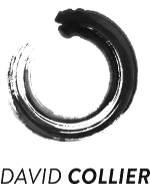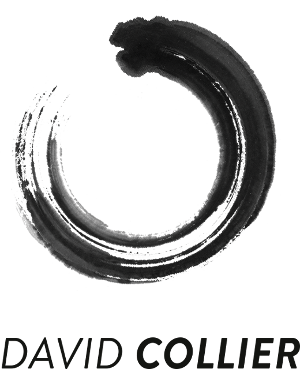Music
a dark horse
 This week’s something for the weekend is the debut release of the Dublin based band a dark horse. They launched their EP a few months back and have been generating a lot of interest since. I know one of the guys, Hugh, so I came across it when he posted about the release and got really into it. It’s really nice blend of ambient folk music which kind of reminds me of The Shins or The Postal Service. The music is undoubtedly instrumental, as opposed to electronic, but there’s a great sense of space and ambience which creates an atmospheric, almost cinematic, vibe. Apart from the music I like that the guys have taken a DIY approach to releasing their music, writing, recording, mixing it all themselves as well as making some excellent videos and really nice artwork to go along with the EP. The reason I’m posting this a day earlier than usual is that they’re playing a gig in The Grand Social this evening as part of Hard Working Class Heros which would be well worth checking out.
This week’s something for the weekend is the debut release of the Dublin based band a dark horse. They launched their EP a few months back and have been generating a lot of interest since. I know one of the guys, Hugh, so I came across it when he posted about the release and got really into it. It’s really nice blend of ambient folk music which kind of reminds me of The Shins or The Postal Service. The music is undoubtedly instrumental, as opposed to electronic, but there’s a great sense of space and ambience which creates an atmospheric, almost cinematic, vibe. Apart from the music I like that the guys have taken a DIY approach to releasing their music, writing, recording, mixing it all themselves as well as making some excellent videos and really nice artwork to go along with the EP. The reason I’m posting this a day earlier than usual is that they’re playing a gig in The Grand Social this evening as part of Hard Working Class Heros which would be well worth checking out.
Musical Rooms
Musical Rooms is a blog written by Sinéad Gleeson about the spaces in which people create music. It’s a really interesting collection of interviews with music creators about the where they make music and how it affects their process. The blog hasn’t been updated in a while but if you’re only finding it now it’ll take you quite a while to get through the more than a hundred odd interviews, it’s more than a weekend’s worth at any rate. I find it to be an interesting look at how the people behind the music and how they think and talk about what they do. As someone who makes music it has been great for me to read about other people’s experiences and try to incorporate ideas into how I work. There’s also some great photos of the musical rooms as well, Lisa Hannigan has to have the prettiest room, Valerie Francis the most minimal, there’s a great view from Teengirl Fantasy’s room and this one from Hunter Gatherer reminds me of my own: Disclosure: I have no affiliation with this product or service, I just think it’s epic!
Disclosure: I have no affiliation with this product or service, I just think it’s epic!
Thom Conaty from _maker
This is an interview I did with Thom Conaty from _maker, a startup that is creating an online platform to help musicians learn about electronics. Full disclosure: I’m friends with Thom, already interested in this stuff, we did the same masters and even worked together on an art project last year. Bearing this possible bias in mind I think _maker have hit onto something really interesting. I got in touch with Thom to see what they’re up to.

Who are _maker?
_maker is myself and Colin Maher, the other director, and we’ve got Tom Canning, Stephanie McCabe and Philip Hayden helping out as well.
How did you get started?
I got interested in DIY electronics about 4 years ago when I got started circuit bending, which is taking apart old electronic noise making things and coaxing sounds out of them by poking around. There was no actual knowledge going on though, I was just poking around with circuit boards to see what I could find. Then the more I did that I became interested in what was actually going on? How do I control this a bit more? So then I got a few kits online and started building things and I got sucked into it. Read more
Brendan O’Driscoll from Soundwave
Earlier in the year I went to Music 3.0 a week long seminar on the future of the music industry. The week was a barrage of talks from interesting people doing interesting things and one of the talks that really struck me was given by Brendan O’Driscoll and Craig Watson. They were speaking about their company Soundwave, which is creating a way to find out, in real-time, what songs people are listening to. I got in touch with Brendan to find out more.
_
 How did Soundwave get started?
How did Soundwave get started?
I started Soundwave with my cousin Aidan Sliney in November of last year. We applied for Launch Pad 4 with a completely different idea in July and got some really good feedback that was very motivating. We sat down and said ʻwe didnʼt get in this time but weʼre going to learn from this, take all the lessons, all the pointers and the comments and apply it to a brand new idea.ʼ So we just started brainstorming ideas. Read more
In Your Own Time #1 – A mobile music app
 I’ve been working away over the last few months making an app for a masters, which is similar to the works I’ve been covering in my ongoing posts about Mobile Music. I’m really excited about the possibilities of creating music in that way and wanted to give it a go myself. I hadn’t been able to try most of the works I’ve been writing about so I was interested in to create a musical experience that I would be happy with as a listener and that I could make available to other people. Read more
I’ve been working away over the last few months making an app for a masters, which is similar to the works I’ve been covering in my ongoing posts about Mobile Music. I’m really excited about the possibilities of creating music in that way and wanted to give it a go myself. I hadn’t been able to try most of the works I’ve been writing about so I was interested in to create a musical experience that I would be happy with as a listener and that I could make available to other people. Read more
Electric Walks – Mobile Music #9
 Electric Walks is an analog example of mobile audio sound art. The work was created by Christina Kubisch and follows on from her earlier experiments with electromagnetic installations. The installations used headphones that allowed the listener to hear the sounds of audio as it travelled through wires throughout the installation, with Kubisch determining the audio. Kubisch later moved away from these fixed installations towards a more aleatoric experience with Electric Walks. To achieve this she developed headphones that allowed the sound of the preexisting electrical devices to be heard. This allows the listener to experience the sound of things like ATMs, mobile phones and lighting and to hear the invisible world of electricity that exists in their lives. Read more
Electric Walks is an analog example of mobile audio sound art. The work was created by Christina Kubisch and follows on from her earlier experiments with electromagnetic installations. The installations used headphones that allowed the listener to hear the sounds of audio as it travelled through wires throughout the installation, with Kubisch determining the audio. Kubisch later moved away from these fixed installations towards a more aleatoric experience with Electric Walks. To achieve this she developed headphones that allowed the sound of the preexisting electrical devices to be heard. This allows the listener to experience the sound of things like ATMs, mobile phones and lighting and to hear the invisible world of electricity that exists in their lives. Read more
Tactical Sound Garden – Mobile Music #8
I haven’t been posting in a while as I’ve been writing up a thesis on Mobile Music. I’m back posting now, and as well as writing about other people’s work I’m going to be posting about In Your Own Time–the composition I wrote for my thesis. Expect some posts about this project in the coming weeks. Today, though, I’m going to focus on Tactical Sound Garden–a community based project using locative audio techniques.
Tactical Sound Garden (TSG) is an open source platform that facilitates community ‘sound gardens’ created by Mark Shepard. The platform piggybacks on existing wireless networks to facilitate members of the community to ‘plant’ sounds by geotagging them to a location. Other members of the community can then experience these sounds by listening to them on a wireless device. The care of the garden is left to members of the community who are able to tend the garden by ‘planting’ or ‘pruning’ sounds or to simply enjoy the garden. It is an example of using GPS technologies to create a locative audio experience. Here’s a short video of Mark Shepard describing the project: Read more
Music 3.0 – the future of the music industry
A fortnight ago I attended a series of talks called Music 3.0–a project to bring people together to imagine the future of the music industry and then to find ways to make it happen. I came across Music 3.0 on a tweet from a friend asking if anyone had heard about it. Information about the project was interesting but vague. You were coming to figure out the future of the music industry and see what could be done about it but there was nothing more specific than that. I was intrigued. The comparative lack of information only added to my interest in the week and I filled out the comprehensive application for and sent it off. I got a reply a week later. Success! I had been accepted.
The week centered around talks from loads of different speakers from a wide array of backgrounds talking about the three bywords of the week Innovation, Disruption and Technology. The energy for each of the speakers was immense. It was pretty much the hottest week in Ireland this year and we were all inside listening rapturously to these people as they poured out there stories. It was an amasing collection of people doing amasing things, most of them unconnected to the music industry but all embodying innovative disruption ideals. Read more
Pure Data Mini Conference
The second annual Pure Data Mini Conference took place a little over a week ago and I was lucky enough to have been invited back to present again this year. The conference took place over two days with six presentation the first day, a concert that night and two workshops the second day. I was speaking the first day about my ongoing work with Mobile Music, talking about the prototype app that I’ve put together and some of my ideas about composing for smartphone. All the audio programming for the app is created using the libpd library which allows Pd to be run on smartphones, which was my connection to the conference. Read more

